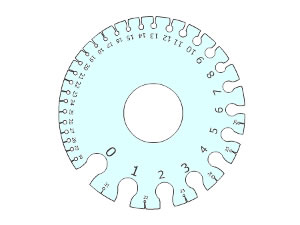Wire Gauge Converter – AWG to mm/mm2 conversion
Many of our customers have been looking for an easy AWG To mm conversion tool so we’ve made one.
What is AWG?
The AWG – American Wire Gauge – is used as a standard method denoting wire diameter, measuring the diameter of the conductor (the bare wire) with the insulation removed. AWG is sometimes also known as Brown and Sharpe (B&S) Wire Gauge.
The “gauge” is related to the diameter of the wire.
larger “gauge” -> smaller diameter and thinner wire.
How to convert AWG to mm
When calclating AWG from diameter or cross sectional area, the diameter and cross sectional area are rounded to the nearest AWG equivalent values.
dn (mm) = 0.127 mm × 92(36-n)/39
An (mm2) = (π/4)×dn2= 0.012668 mm2 × 92(36-n)/19.5
AWG to mm conversion chart
Things To Remember:
Wire Gauges run low to high – this means that the smaller a gauge number, the larger it is in mm. Conversely, a large number in AWG equates to a very small number of mm.
AWG sizes do not fit perfectly into mm or inches, so you may need to round up or down when safe to do so.
Cable sizes (including AWG) refers to the size of the conductor, not the total thickness of the cable including sheathing etc.
Do not confuse AWG (American Wire Gauge) with SWG (Standard Wire Gauge, the now largely redundant British Imperial standard which was superseded by mm.) as they are not equal. Always double-check to make sure you are buying the correct thickness of wire or cable.



